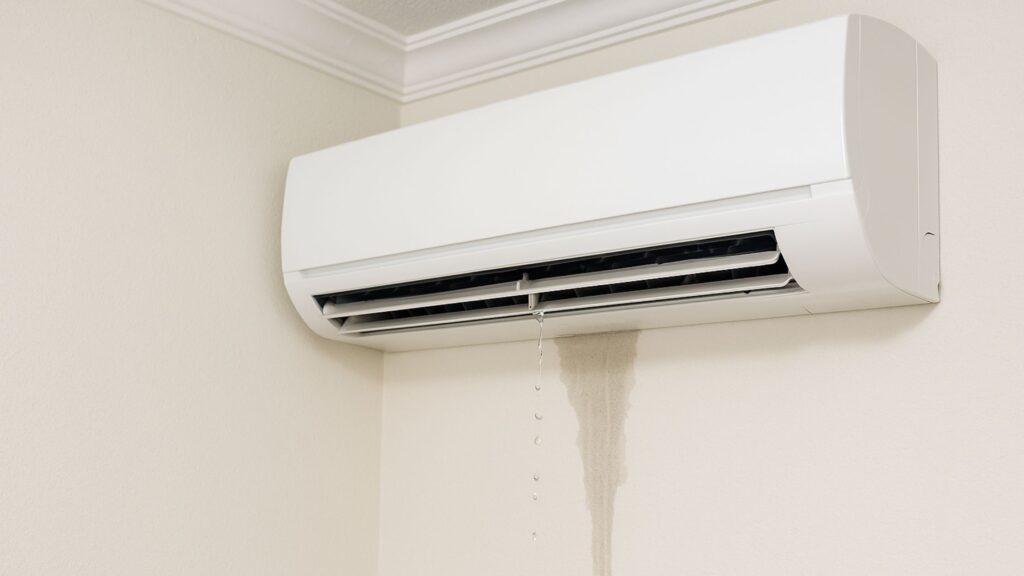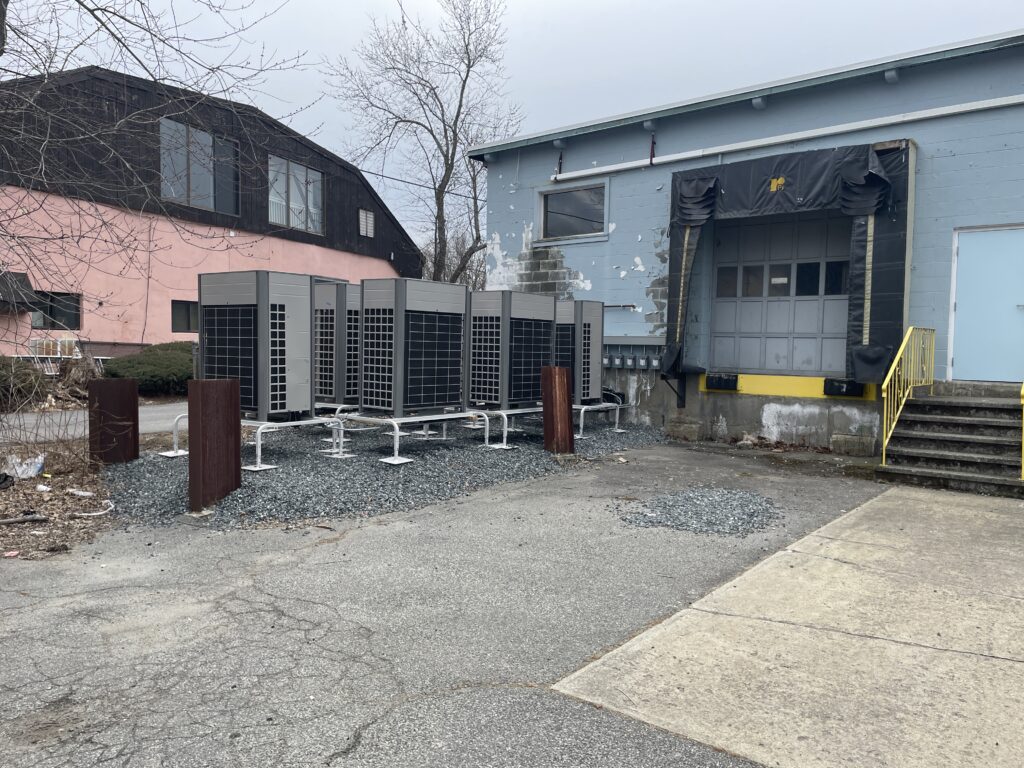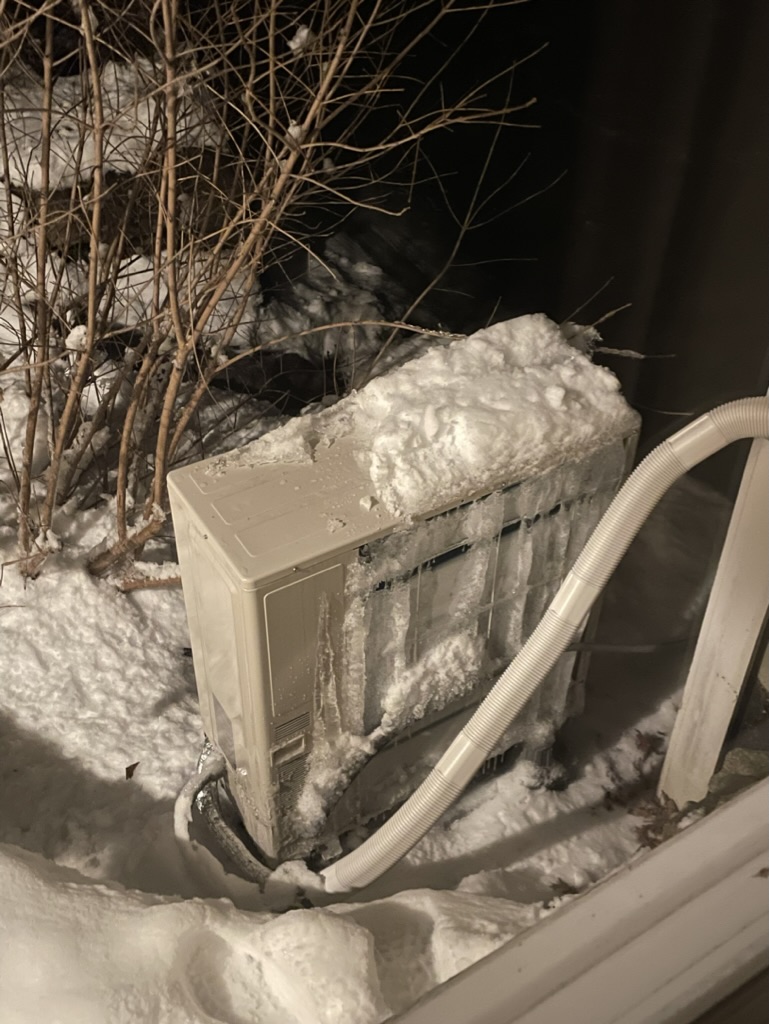Noticing water leaking from the AC unit inside the home can be alarming, especially when it’s pooling under the air handler or dripping from a ceiling cassette. While a small amount of moisture is normal outdoors, indoor leaks usually signal a drainage, airflow, or freezing issue that needs attention to prevent water damage, mold, and system failure. Understanding how condensation forms and where it should go makes it easier to pinpoint the cause and act quickly.
Table of Contents
ToggleWhy is water leaking from my indoor AC unit?
Water leaking from AC unit most often traces back to a clogged condensate drain line, a cracked or rusted drain pan, a dirty air filter that froze the evaporator coil, a refrigerant problem that also leads to coil icing, or a failed condensate pump that can’t lift water to a drain. Improper installation and even oversized systems (short cycling) can worsen condensation management and cause overflow into the home.
When the evaporator coil cools warm, humid air, moisture condenses on the coil and should flow into the primary drain pan, down the PVC condensate line, and safely out of the house (or into a pump and then to a drain). If any part of that path is blocked, damaged, or overwhelmed, the water finds the next path, often your flooring or drywall.
How does an AC make water and where should it go?
Air conditioning is a dehumidification process: as indoor air is blown over the cold evaporator coil, moisture drops out of the air and collects as condensate. In a healthy system, that water drains through a sloped pan and a clear condensate line to the exterior or a plumbing drain. Central systems, mini‑splits, and portable units each manage condensate differently, but none should spill water indoors under normal operation.
Because condensation volume rises with humidity, systems in muggy weather produce more water. That’s expected but it still must drain properly. If you see indoor pooling around the air handler, the drain line, pan, or pump typically needs maintenance or repair to restore proper drainage and avoid damage.
Water leaking from AC unit: common causes and quick checks
A clogged condensate drain line is the top culprit. Dust, algae, and mold accumulate in the line and P-trap, backing water up until it spills over the pan rim. A wet/dry vacuum at the exterior cleanout, followed by a diluted vinegar or bleach flush, often clears moderate clogs. If the clog persists, an HVAC technician should snake and sanitize the line to prevent regrowth.
A rusted or cracked drain pan will drip even if the line is clear. Shine a flashlight under the evaporator to inspect the pan, add a small amount of water, and watch for seepage. Temporary sealants can buy time, but a pan that’s corroded or split typically needs replacement to stop recurring leaks and prevent secondary damage to framing and insulation.
Dirty air filters restrict airflow, allowing the evaporator coil to get too cold and freeze. When the ice melts, it can overwhelm the pan. Power the system off, run the fan-only setting to thaw the coil, replace the filter, and resume cooling. To prevent refreezing, change filters regularly (per MERV rating and household needs) and check for blocked supply/return vents.
Low refrigerant or leaks change coil temperatures and promote icing. If you’ve had to defrost the coil more than once or hear hissing, a certified technician should test for leaks, repair the line set or coil if needed, and weigh in a proper charge, overcharging or undercharging also harms performance and can contribute to water problems.
If your system relies on a condensate pump (common in basements or interior spaces without gravity drainage), a stuck float switch, failed motor, or power issue can cause overflow. Verify power, inspect the float operation, and clear slime from the pump reservoir. Replace failing pumps to restore safe, automatic condensate removal and avoid repeat leaks.
Incorrect installation—like improper unit pitch, poorly sloped drain lines, or missing cleanouts—can leave water trapped. Oversized systems that short cycle don’t run long enough to move condensate through the trap consistently, and moisture can re-entrain or spill. An HVAC pro can correct slope, add cleanouts, and confirm the system is sized and pitched for reliable drainage.
To see how these leak patterns fit into broader cooling problems across the state, homeowners can review the guide, Common AC Issues in Massachusetts Homes & solution.
Quick reference: causes, symptoms, and the right next step
| Cause | What you’ll notice | Safe DIY check | When to call a pro |
| Clogged condensate drain | Pan overflow, gurgling drain, water at air handler | Wet/dry vacuum at exterior drain, pour diluted vinegar | Stubborn clogs, repeated algae growth, line replacement |
| Cracked/rusted drain pan | Drips under unit even after line is cleared | Flashlight inspection, water test in pan | Pan replacement, coil lift/removal |
| Dirty air filter → frozen coil | Little airflow, ice on lines/coil, then leak on thaw | Replace filter, fan-only to thaw, open blocked vents | Persistent freezing, airflow imbalance diagnostics |
| Low refrigerant/leak | Hissing, coil icing, poor cooling | Visual check for oil stains | Leak find/repair and recharge by certified tech |
| Failed condensate pump | Full pump reservoir, float not switching, overflow | Clean reservoir, test float, verify power | Pump replacement, re-route discharge line |
| Improper installation/oversized unit | Frequent on/off cycles, intermittent leaks | Visual slope check on lines/pan | Re-pitch drain, add cleanouts, right-size system |
Massachusetts factors that make leaks more likely
Massachusetts summers are hot and humid, pushing AC systems to dehumidify heavily for long cycles. That added load magnifies any weakness in filtration, drainage, or coil cleanliness, making clogs, frozen coils, and pan overflow more common during peak season. Regular pre-season service and mid-summer checks reduce surprise leaks and comfort loss when humidity surges.
Seasonal startups after long, cool springs mean dormant dust and biofilm can break loose when the first heat wave hits. Filters and drain lines that weren’t serviced in spring can choke quickly, especially in homes with recent renovation dust or high pollen counts. Pre-cooling inspections help catch these issues before water appears under the air handler.
Many Massachusetts air handlers sit in basements or closets where gravity drainage isn’t possible, so condensate pumps do the heavy lifting. Pumps that go unchecked can silently fail, and with longer run times in July–August, that’s a recipe for overflow. Adding float switch tests to maintenance routines keeps pump-driven drainage reliable through the season1.
Homes near the coast can see accelerated corrosion on pans and fittings from salt-laden air, especially in older systems. Even inland, older galvanized or thin pans may pit and crack over time. Replacing aged pans and adding secondary safety pans under attic air handlers are proven safeguards against ceiling damage during extreme humidity.
For ongoing care that aligns to local climate and housing stock, mid-season tune-ups through a trusted air conditioning service in massachusetts help keep condensate paths clean and functioning under heavy dehumidification loads.
Massachusetts leak drivers and how to counter them
| Local factor | Effect on condensate | Smart prevention |
| High summer humidity | Higher water volume, lines overwhelmed | Spring tune-up, mid-season drain cleanout, verify trap/line slope |
| Long dormant periods | Biofilm breaks loose and clogs traps | Replace filters, sanitize drains before first heat wave |
| Basement air handlers with pumps | Overflow risk if pump/float fails | Test float, clean reservoir, replace aging pumps |
| Older/oxidized drain pans | Hidden dripping, ceiling stains | Inspect annually, replace pans, add secondary pan and shutoff |
When to call for residential, commercial, or emergency AC repair?
If you hear banging, rattling, or screeching; smell musty or burning odors; see the thermostat blinking or cycling oddly; or notice uneven cooling along with water around the unit, it’s time to talk to a professional. Those symptoms often coincide with drainage failures, frozen coils, or electrical issues that can escalate without prompt, qualified service.
For households, residential AC repair can defrost coils safely, replace cracked pans, sanitize and re-pitch drains, and restore the correct refrigerant charge. For offices, restaurants, and retail spaces, commercial AC repair adds the scale and redundancy planning needed to protect inventory and uptime, particularly when multiple air handlers or ceiling cassettes are involved. If water is actively pooling near electrical components or dripping through ceilings after hours, emergency AC repair is warranted to mitigate safety risks and property damage.
Since many leaks trace back to airflow and maintenance gaps, annual service, ideally in the spring keeps filters, coils, pans, and drains ready for peak humidity. Technicians can also catch refrigerant leaks and worn pumps before they become mid-summer emergencies. In Massachusetts, where cooling loads spike abruptly, proactive care pays off in comfort and cost control.
Midway through the season, local owners often add a service touchpoint to verify that condensate lines remain clear under heavier dehumidification. If you’re coordinating multiple properties or a busy storefront, scheduling off-hours maintenance is a practical way to minimize disruption with commercial ac repair support on stand‑by.
Need AC repair services in Massachusetts? Quick response times and statewide coverage can stop a small leak from turning into a costly system shutdown.
Step-by-step checks before calling a pro
First, cut power to the indoor unit at the thermostat and the breaker. Running while leaking can worsen damage, especially if a coil is frozen and then thaws rapidly. Safety comes first, water and live equipment don’t mix, and power-down protects the blower motor and control board while you inspect.
Pull the air filter and hold it to the light. If you can’t see through it, replace it with the correct size and MERV rating. Turn the system to fan-only for 30–60 minutes to thaw a frosted coil. This step often reveals whether airflow was the root cause or if deeper issues like refrigerant loss need professional diagnosis.
Locate the condensate drain line and exterior discharge. If you find a cleanout cap near the air handler, remove it and pour a cup of diluted white vinegar to inhibit algae. At the outside termination, use a wet/dry vacuum to pull out sludge. Refit the cleanout and restore cooling once the line runs clear; persistent clogs point to the need for line brushing or trap replacement by a technician.
Shine a light into the primary drain pan under the coil. Look for rust, pinholes, and standing water near the pan edge. If you spot leakage away from the drain connection, a pan repair or replacement is likely. Homes with attic air handlers should also verify that a secondary (emergency) pan and float switch are in place to protect ceilings in case the primary system fails.
If your setup uses a condensate pump, remove the reservoir cover, clear slime, and confirm the float moves freely and triggers the pump. Check the discharge tubing for kinks and the check valve for blockage. Pump motors that hum but don’t move water, or floats that don’t switch, typically warrant replacement to avoid repeat overflows.
Conclusion
Water leaking from the AC unit isn’t just a nuisance,it’s a system signal. By confirming airflow, clearing and sanitizing the condensate path, inspecting the pan and pump, and correcting refrigerant and installation issues, homeowners and businesses can restore dependable cooling without the drip, drip, drip. For prompt, professional air conditioning repair, including emergency response and ongoing maintenance, Endless Energy provides full‑scope support for homes and businesses throughout Massachusetts. We offer trusted diagnostics, fast fixes, and seasonal upkeep to keep systems dry and efficient when humidity peaks.
(FAQs) Frequently Asked Questions
Is any AC water leakage normal?
Yes, outdoor dripping is normal for central systems, window units, and mini‑splits as they expel condensate. Indoor pooling, however, is not normal and typically signals a clogged drain, cracked pan, failed pump, frozen coil, or installation issue that needs attention to prevent damage.
Can I run my AC if it’s leaking inside?
It’s best to shut it off. Continuing to run risks electrical damage, mold growth, and ceiling or flooring harm. Switch to fan-only to thaw a frozen coil if present, clear the drain if you can do so safely, and schedule service to address the root cause so the leak doesn’t return.
What causes leaks only on very humid days?
High humidity increases condensate volume. If the drain is partially restricted, the pan is undersized or corroded, or the system is short cycling, heavy moisture production can overwhelm drainage and spill intermittently, especially during heat waves common in Massachusetts summers.
How do I unclog an AC drain line?
Power down the system. At the outdoor drain termination, attach a wet/dry vacuum to pull out sludge. At the indoor cleanout, pour a diluted vinegar or bleach solution to kill algae, then flush with water. If the clog persists, a technician can brush the line, clear the trap, and sanitize to prevent regrowth.
How often should AC maintenance be done to prevent leaks?
Aim for annual maintenance in spring before heavy use, with mid-season checks in especially humid climates or high‑use homes and businesses. Proper service includes filter changes, coil cleaning, drain line sanitizing, and inspection of pans, traps, and pumps to stop leaks before they start.






